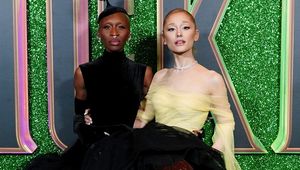In the ever-evolving domain of social media, particularly on platforms like Instagram, the line between inspiration and imitation can often blur. Recently, a peculiar incident has sparked much conversation among influencers, bloggers, and followers alike. The tale centers around travel influencers Lauren Bullen, famously known as Gypsea Lust, and her partner Jack Morris, as they confront an extreme case of photo imitation by a woman named Diana Alexa.
Lauren Bullen and Jack Morris have cultivated a robust online presence, amassing a collective following of over two million across their accounts. Their content, rich with wandering adventures and captivating aesthetics, inspires countless admirers to yearn for exotic locales and picturesque moments. However, the idyllic world they present has taken an unsettling turn, morphing into a narrative that raises questions of originality and artistic creation.
The conflict ignited when Bullen discovered a surprising trend—Diana Alexa, a lesser-known Instagram user, had seemingly taken it upon herself to replicate virtually every detail of Bullen's travel photographs. From outfits to exact locations, even the compositions mimicked the original works so closely that it prompted Bullen to confront the strange mimicry publicly. Fans of Gypsea Lust alerted Bullen after noticing that many of Diana's posts alarmingly resembled her own shoots.
Lauren’s initial reaction was one of disbelief. In a blog titled "Imitation is the Sincerest Form of Flattery," she elaborated on her dismay, suggesting that Diana's actions went beyond simple inspiration or flattery. The meticulousness of this endeavor—emulating locations from the Greek Islands to the Sahara Desert—suggested a level of dedication that bordered on obsession. Bullen painted a vivid picture of the similarities, illustrating them with side-by-side screengrabs that showcased how exact the representations were. In one instance, Diana appeared in an outfit, which was similar down to the jewelry she wore.
Diana didn’t just stop at wardrobe imitation; she even went further to hire someone to play the part of Bullen’s partner, complete with matching attire, replicating the aesthetic of the couple’s popular travel photography. The stakes escalated as viewers began recognizing that the values of individuality and creativity were at risk. Bullen mused on how imitation can stifle genuine creative expression in the crowded online space.
Attempting to gain insight into Diana's motivations, Bullen reached out to her directly. In their conversation, Diana reportedly downplayed her imitation, suggesting that “everyone copies” and claiming that even bigger accounts do the same. This dismissal incited further frustration from Bullen, who argued the distinction between mere similarity and “actively stealing someone’s art to a ridiculously creepy level” needed to be recognized.
Diana's response highlighted a growing trend among internet users—rationalizing imitation under the guise of artistic expression while underestimating the emotional toll on original creators. It raises a critical question: where does inspiration end, and plagiarism begin? Diana decided to make her account private and remove the contentious posts following the online backlash.
Meanwhile, social media users voiced a spectrum of reactions. Some expressed empathy for Lauren, appreciating her artistic integrity, while others criticized both parties for the public confrontation and the drama it stirred—effectively turning a personal issue into a spectacle for social platforms. Onlookers found it almost absurd that what started as a creative sharing platform could devolve into a battleground over originality.
In a world increasingly driven by social media, such incidents also serve as a reminder of how influencer culture can influence behavior and expectations among followers. It poses questions about authenticity in an environment saturated with curated lifestyles. As travel influencers showcase curated snapshots of their glamorous lives, the nature of imitation brings up discussions about intent and integrity in representation.
Ultimately, Lauren's continual engagement with this incident portrays her resilience and commitment to her art. She reflected on the experience, offering a poignant insight: “Diana, if that’s even your name, what you’ve done is an art in itself—you’ve caused a reaction.” This statement encapsulates the complexities surrounding creativity in the digital age, where one person’s imitation can be another’s inspiration, and vice versa.
As the dust settles on this peculiar episode, both the imitator and the original creator remain entwined in a curious dance replete with admiration, critique, and the timeless struggle of defining creative boundaries. While travel documentation remains prevalent on platforms like Instagram, this episode reaffirms the persistent tensions between innovation and imitation that all creators must navigate. What remains clear, as Bullen aptly noted, is that the very act of creating art continues its role in igniting reactions among individuals—inviting dialogues not just about artistry but also about what it means to truly be original in today's visually driven world.



